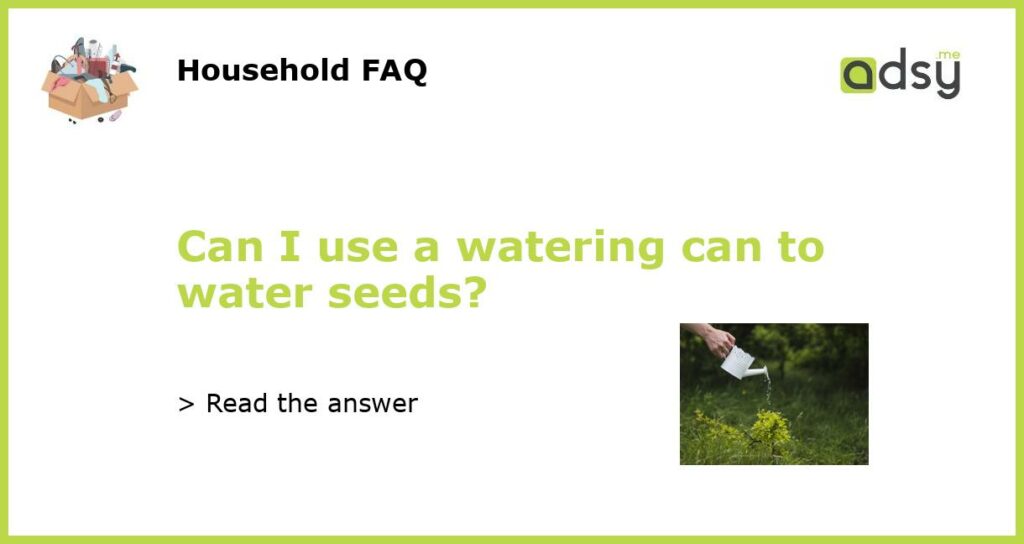Yes, a watering can is an effective tool for watering seeds
Using a watering can to water seeds is a common practice among gardeners and is considered an effective tool. Seeds require a consistent and gentle water source to germinate and grow properly, and a watering can provides just that. Let’s explore why a watering can is a great option for watering seeds.
The benefits of using a watering can for watering seeds
1. Controlled flow: One of the primary advantages of using a watering can for watering seeds is the controlled flow of water. The spout on a watering can allows you to control the amount of water being poured, preventing overwatering or disturbing the seeds’ delicate structure. This controlled flow helps ensure that the seeds receive just the right amount of water needed for germination.
2. Gentle watering: Seeds have delicate structures, and excessive force or pressure can dislodge them or wash them away. A watering can provides a gentle and even distribution of water, reducing the risk of damage to the seeds. This is especially important for small or fragile seeds that may be easily disturbed.
3. Avoiding soil erosion: Watering seeds directly from a hose or other high-pressure source can lead to soil erosion. The force of the water can displace the soil and expose the seeds, making them more vulnerable to the elements. Watering cans prevent this issue by delivering water directly to the soil surface, minimizing the risk of erosion.
4. Precise targeting: With a watering can, you have more control over where the water goes. This precision targeting allows you to water the specific areas where the seeds are planted, ensuring they receive adequate moisture. Additionally, it helps prevent water wastage and reduces the chances of weeds growing in unwanted areas.
5. Versatility: A watering can is a versatile tool that can be used for various gardening tasks besides watering seeds. It can be used for watering young seedlings, indoor plants, and even larger plants and shrubs. Investing in a high-quality watering can means you’ll have a tool that can benefit your garden throughout the growing season.
Tips for using a watering can to water seeds effectively
1. Use a fine rose attachment: Many watering cans come with interchangeable attachments, including a rose head. This attachment breaks up the flow of water into a fine, gentle spray, which is ideal for watering small seeds. It helps prevent the seeds from being dislodged or damaged.
2. Water in a circular motion: When watering seeds with a watering can, move in a circular motion around the area. This approach ensures that all seeds receive water equally, preventing uneven saturation and promoting uniform germination.
3. Water from a low height: Hold the watering can close to the soil surface when watering seeds. Watering from a low height reduces the impact of water droplets, minimizing soil disturbance and protecting the seeds.
4. Time your watering: Seeds need consistent moisture, but excessive watering can lead to issues such as rot or fungal growth. It’s best to water seeds in the morning, as this allows any excess water to evaporate throughout the day. Avoid watering in the evening, as the excess moisture may not dry up quickly and can promote fungal diseases.
5. Monitor moisture levels: Regularly check the moisture level of the soil to ensure it remains adequately moist. Ideally, the soil should be damp but not waterlogged. Adjust your watering frequency accordingly to maintain the proper moisture balance for the seeds.
In conclusion
A watering can is a valuable tool for watering seeds. Its controlled flow, gentle watering, ability to prevent soil erosion, precise targeting, and versatility make it an ideal choice for maintaining the right moisture level during germination. By following the tips mentioned above, you can effectively use a watering can to water seeds and promote healthy growth in your garden.






